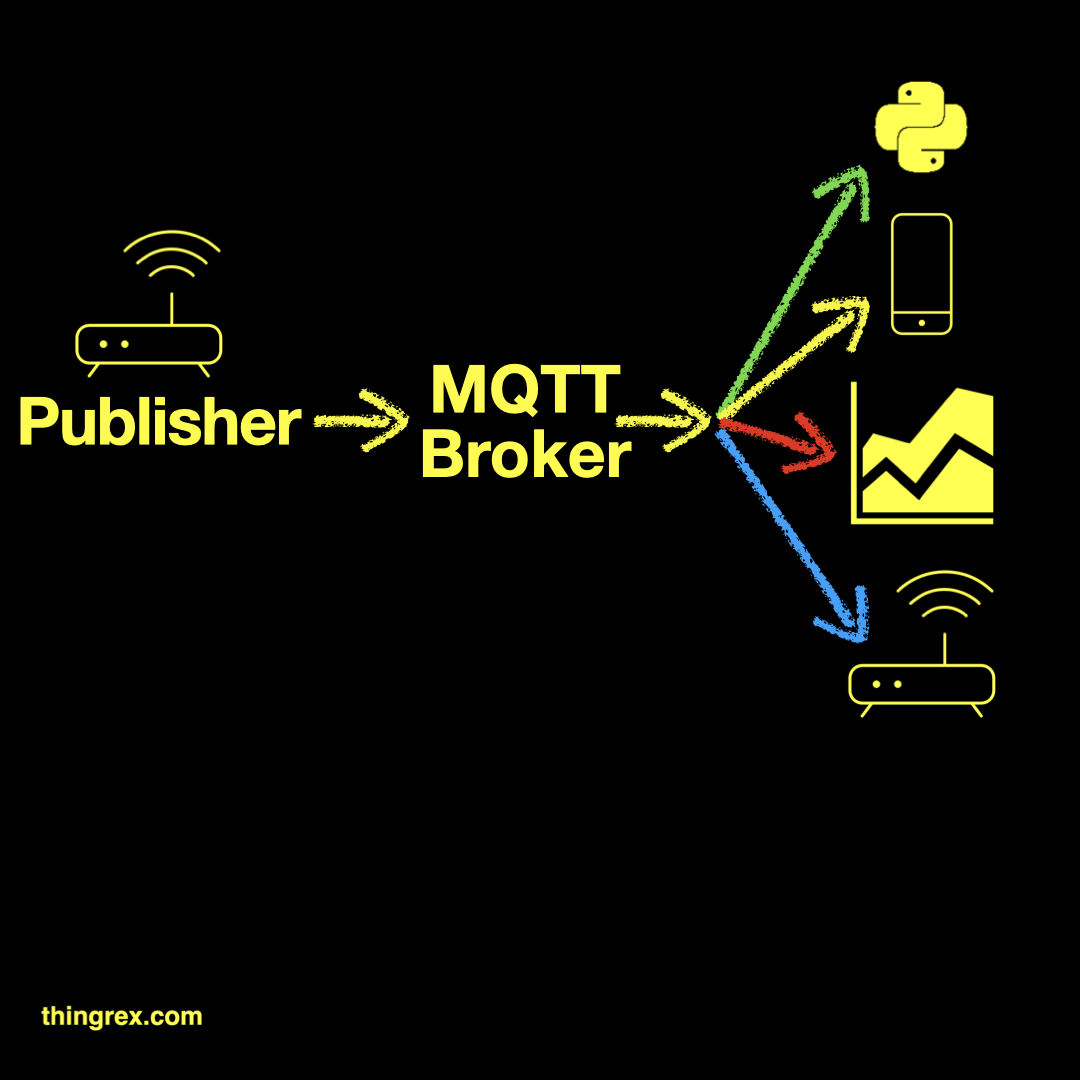
Unlock IoT Flexibility: The Decoupled Power of MQTT
MQTT enables the decoupling Publishers from Subscribers. This might sound technical, but it has implications for flexibility and scalability in IoT solutions.
Let’s explore why this feature is one of MQTT’s greatest strengths.
The Magic of Decoupling: Publishers & Subscribers in MQTT
At its core, MQTT (Message Queuing Telemetry Transport) is a lightweight messaging protocol ideal for constrained devices and low-bandwidth, high-latency, or unreliable networks – common scenarios in IoT. One of its fundamental architectural principles is the separation between Publishers and Subscribers.
Imagine you have an IoT device in the field – perhaps a sensor monitoring environmental conditions. This device acts as a Publisher. It sends messages (e.g., temperature readings, humidity levels) on a specific Topic (e.g., dt/livingroom/temperature).
Now, various other components might be interested in this data. These are the Subscribers. You could have:
- An application that triggers notifications if the temperature exceeds a certain threshold.
- A dashboard that visualizes the data in real-time.
- A database that logs historical data for analysis.
- Even other IoT devices that need this information to adjust their own behavior.
Each of these Subscribers simply “subscribes” to the dt/livingroom/temperature Topic. The crucial point here is that the Publisher (our sensor device) has no direct knowledge of who these Subscribers are or even how many there are. It just sends its message to the MQTT Broker, and the Broker takes care of delivering it to all interested Subscribers.
The Real-World Advantage: Zero Firmware Changes for Subscriber Modifications
This decoupling is where the true power lies for IoT deployments. Consider this: what if you need to change how you use the data from your sensor?
- You might want to add a new Subscriber – say, a new analytics service.
- You might need to remove an existing Subscriber – perhaps the old notification system is being decommissioned.
- You might want to modify a Subscriber – for instance, upgrading your dashboarding system with new features.
Because the Publisher (your IoT device) is completely unaware of the Subscribers, you can make all these changes without altering a single line of code on the device’s firmware.
Think about the implications:
- Reduced Development Time: No need to re-develop, re-test, and re-deploy firmware for subscriber-side changes.
- Lower Maintenance Costs: Less risk of introducing bugs into the device firmware when updating backend systems.
- Increased Agility: Quickly adapt your IoT solution to new requirements or integrate new services.
- Scalability: Easily scale the number of subscribers up or down as needed.
This is a massive benefit.
By embracing this decoupling, you’re not just sending messages; you’re building an ecosystem where components can evolve independently, fostering innovation and adaptability.
What Are Your Thoughts?
The decoupled nature of MQTT Publishers and Subscribers is a simple concept with profound benefits for IoT architecture.
Do you have any questions about this topic, or perhaps experiences to share where this MQTT characteristic has been particularly beneficial in your projects? Let me know via the feedback button! 👉
